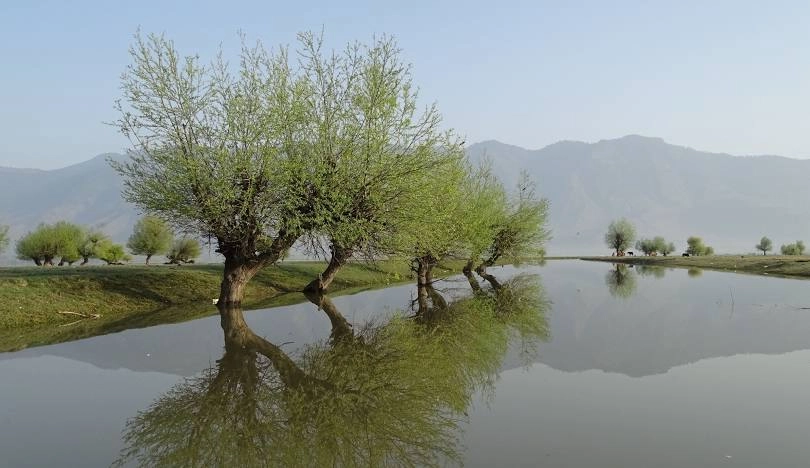Amarnath Cave - Nature’s Spiritual Sanctuary
Anantnag
Overview
The Amarnath Cave is a large, 130 ft high, and 90 ft long cave in the Himalayas that is considered a major Hindu shrine.The cave is a holy place for Hindu pilgrims, because of its ice content. The ice pillar present inside the cave is also called ice lingham, the phallic symbol of Lord Shiva. Two smaller ice stalagmites represent Parvati, his wife, and Ganesha, his son.
Weather
Winter (October to March)
Winters are extremely harsh, with temperatures often dropping below -8°C. Heavy snowfall can occur, making the cave inaccessible during this season.
Summer (June to August)
Summers are the best time to visit, with temperatures ranging from 15°C to 25°C during the day. The melting snow allows for access to the cave, and the surrounding area is lush and green. .
Monsoon (July to September)
The monsoon season brings moderate to heavy rainfall, which can lead to slippery trekking conditions. While the area is still accessible, visitors should be cautious.
How to Reach
By Air
The nearest airport is Srinagar Airport (approximately 95 km from Pahalgam), well-connected to major cities. From Srinagar, you can take a taxi to Pahalgam or Baltal, the two base camps. .
By Train
The nearest railway station is Jammu Tawi, around 315 km from Pahalgam. From there, buses and taxis are available.
By Car
You can drive or hire a taxi to Pahalgam or Baltal, which serve as starting points for the trek.
Best time to Visit
June to August
June to August is the best time to visit the Amarnath Cave due to favourable weather, which makes the high-altitude trek safer and more accessible, and because the iconic ice lingam, symbolising Lord Shiva, is at its fullest during this period of the annual pilgrimage season.
History
The Amarnath Cave, one of Hinduism's most sacred pilgrimage sites, is revered as the place where Lord Shiva disclosed the secret of immortality to his consort, Goddess Parvati. Located at an altitude of around 12,000 feet in the Kashmir Himalayas, the cave houses a naturally forming ice stalagmite, believed to represent the lingam of Shiva. This ice lingam grows and wanes with the lunar cycle, making the site especially significant during the Shravan month (July-August) when devotees undertake the Amarnath Yatra, a strenuous trek through mountainous terrain.Mythologically, Lord Shiva is believed to have left behind symbols of his divinity at various points along the trek, symbolising his journey of renunciation before revealing the secret of immortality. The pilgrimage routes to the cave, either from Pahalgam (42 km) or Baltal (16 km), are challenging and require pilgrims to be physically prepared. Efforts by the Shri Amarnath Shrine Board (SASB) help manage the large influx of pilgrims, ensuring environmental conservation and the safety of visitors during the yatra.The spiritual and historical significance of the Amarnath Cave continues to inspire millions of devotees who visit for a chance to seek blessings at this revered site.


























